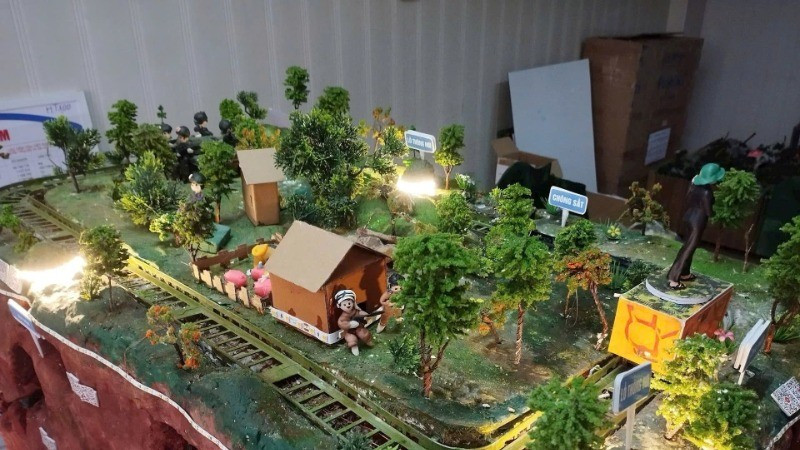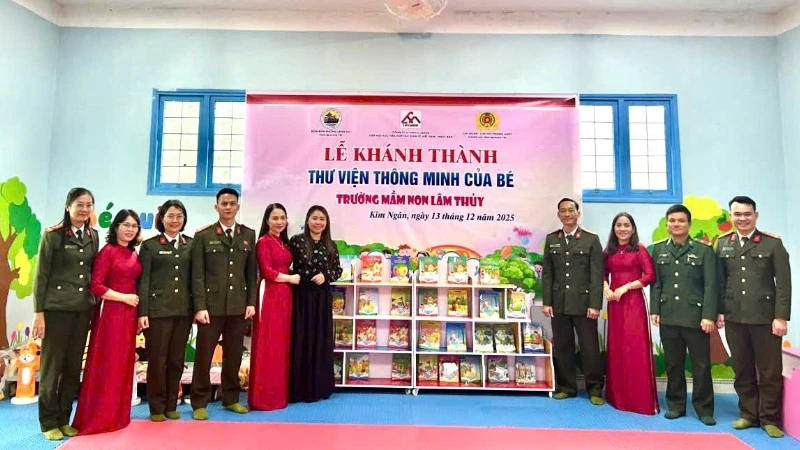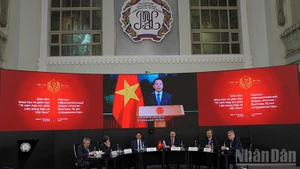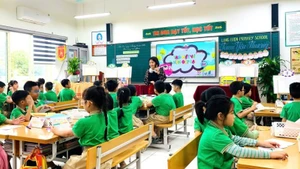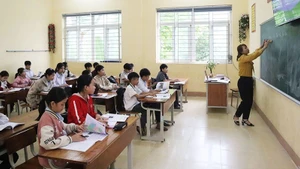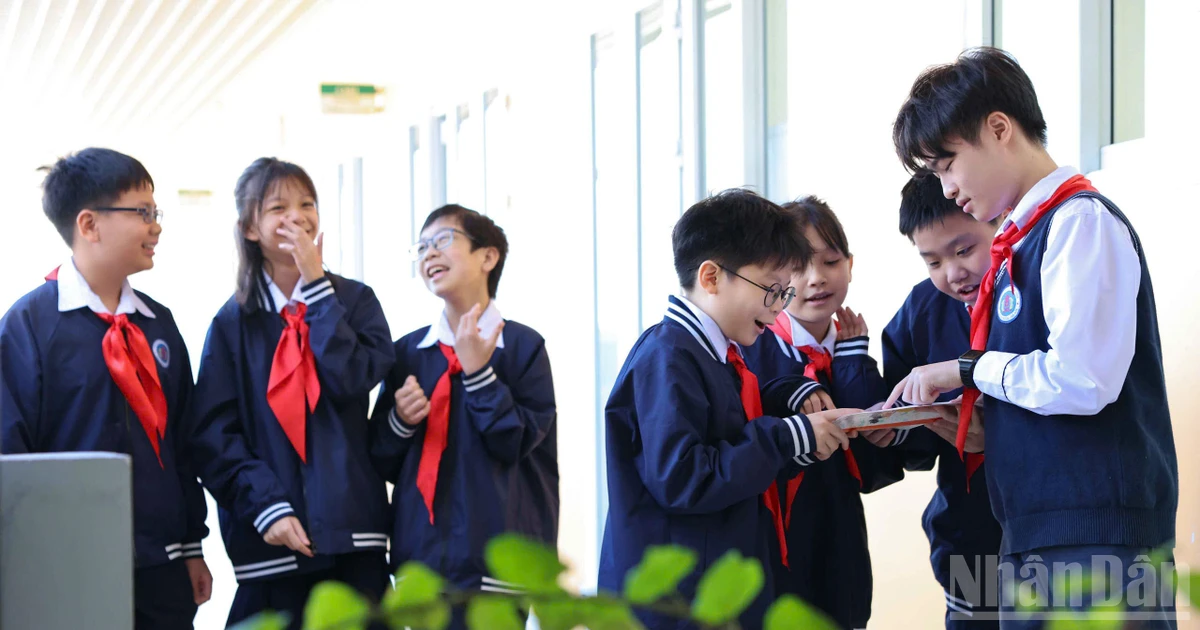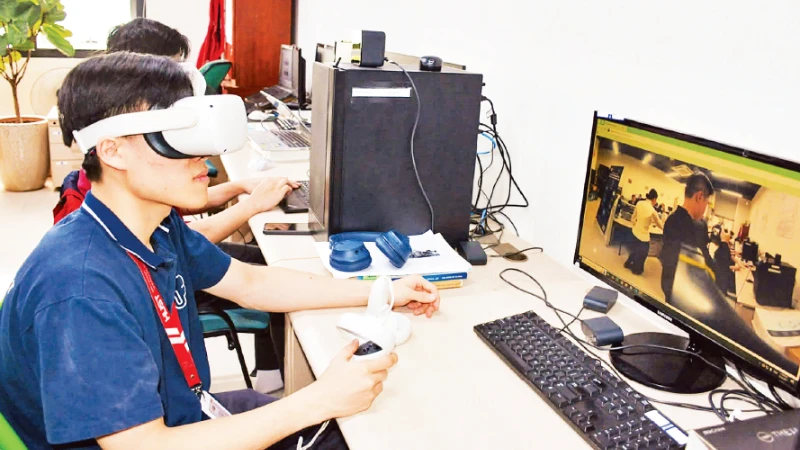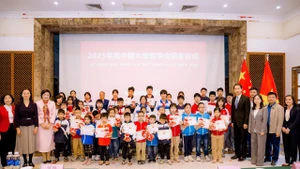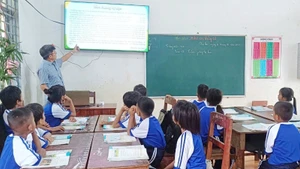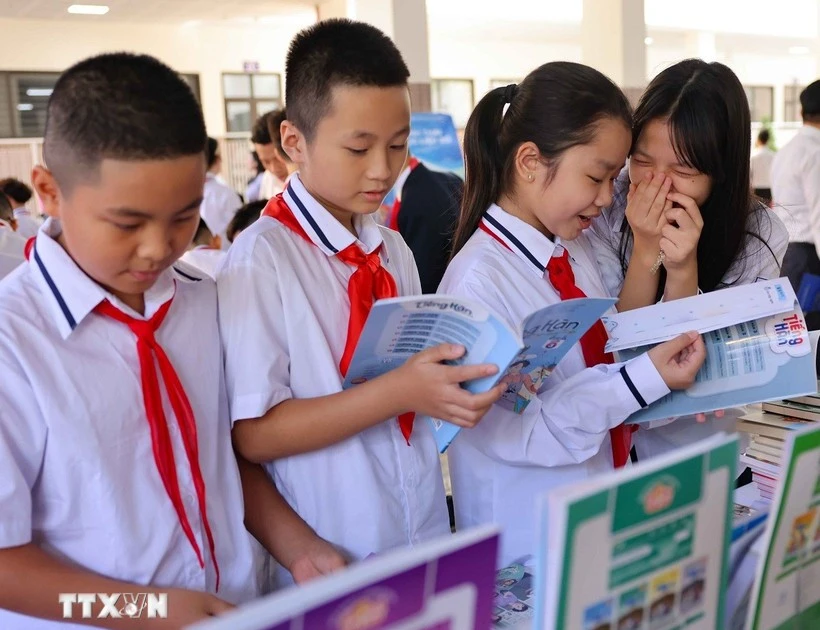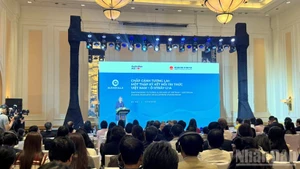Applying technology in history education
Located in Cu Chi District, Ho Chi Minh City, the Cu Chi Tunnels stand as a cultural and historical site of special significance which has attracted numerous domestic and international visitors.
With a total length of around 250 km, fully equipped for defence and combat, and constructed entirely by human effort using rudimentary tools, the Cu Chi Tunnels reflect the intelligence and resilience of Vietnamese soldiers and people.
One outstanding youth creation honouring the tunnels is the “Cu Chi Tunnel Model” by a group of students from Cau Giay Secondary School in Ha Noi, which won the grand prize at the 20th National Youth and Children’s Creativity Contest in 2024.
The contest was jointly organised by the Ho Chi Minh Communist Youth Union Central Committee, the Viet Nam Union of Science and Technology Associations, the Ministry of Education and Training and the Ministry of Science and Technology.
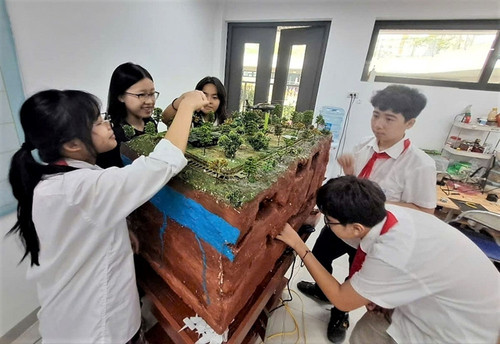 |
| The model was initiated and created by five students in grades 8 and 9 from Cau Giay Secondary School in Ha Noi (Photo: Le Duy) |
The model was initiated and created by five students in grades 8 and 9, namely Luu Bao Chau, Nguyen Duy Kien, Nguyen Lam Uyen, Le Ngoc Khai Vy, and Nguyen Thanh Mai.
The model’s highlight is the fusion of traditional and modern elements: robot soldiers and militia figures sculpted from rice powder, which is used to make traditional ‘to he’ toys, while the operation incorporates technologies such as sensors, automation, and solar power batteries.
The robot characters can move according to a video-scripted scenario to guide viewers to various locations inside the tunnels. Illumination from LED lighting in the introduced areas creates an eye-catching effect, providing an immersive experience.
This model also integrates QR codes allowing students and visitors to access detailed historical information about each tunnel section, from weapon storage rooms and food depots to medical areas, as well as the combat tactics used during the resistance.
The project’s team also developed a historical quiz game that offers engaging and lively knowledge about the Cu Chi Tunnels. All content is provided in both Vietnamese and English, with audio narration, information lookup, interactive videos, and more, giving students a new experience in learning history and enabling international audiences to access it.
According to the judging panel, the model has the potential to become a practical teaching aid for teachers and students at all levels to learn about Cu Chi Tunnel.
Luu Bao Chau, a project’s team member, shared that the group plans to develop additional features and add popular languages such as Chinese, Russian, French, Spanish, and Korean. They also intend to create a model introducing the Vinh Moc Tunnels in Quang Tri Province.
“Mapping” Cu Chi Tunnels in digital space
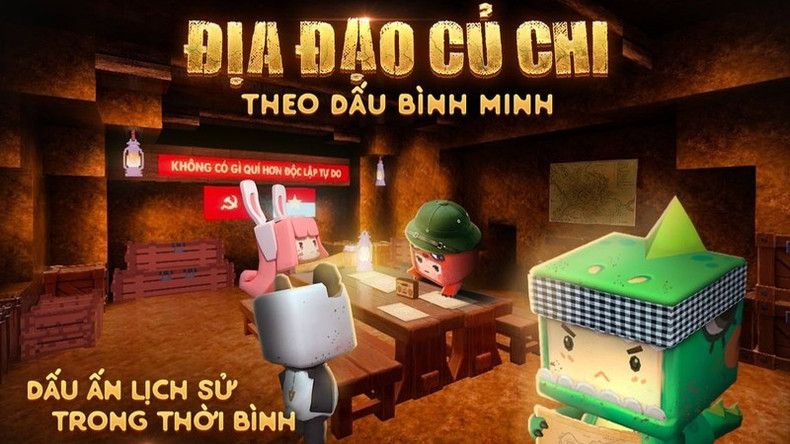 |
| The “Cu Chi Tunnels – Tracing the Dawn” map in Mini World has attracted tens of thousands of visits, downloads, and comments from the gaming community |
Beyond innovations in traditional education, digital technology is a powerful tool helping young people connect with and honour the nation’s historical values.
Another project inspired from the Cu Chi Tunnels is Mini World — an online game for players aged nine and above.
Inspired by the film ‘Dia Dao: Mat Troi Trong Bong Toi’ (Tunnel: Sun in the Dark), the quartet Mini-Dev, consisting of Nguyen Tuan Tien (born 1994), Truong Giang (2006), Hoang Nhan (2011), and Mini Ca (2007), spent about three weeks designing a map of the special military structure of the Cu Chi Tunnels, using the language of online gaming.
To ensure accuracy of their design, the team members consulted various reliable sources of reference and visited the historical site.
One of the aims of recreating the Cu Chi Tunnels in the game is to allow young people, who have not had the chance to visit the site or are not old enough to watch the recently-released film ‘Tunnel: Sun in the Dark’, to explore and learn about the tunnels’ structure, functions, and stories in an authentic and vivid way through technology.
With the support of creative tools in Mini World, the group recreated spaces within the tunnels such as the operations meeting room, bunker, shelter, infirmary, food storage, and weapons depot, along with familiar wartime items including the Hoang Cam stove, radio, pith helmet, and more.
As an online game, the map includes interactive tasks such as completing journeys, answering historical questions, and searching for items. After completing the Cu Chi Tunnels map, the game character proceeds to a new map featuring other cultural works and scenic spots across Viet Nam, also created by Mini-Dev.
This conveys the young creators’ humanistic message: after the darkness of war comes the light of peace, in which the beautiful country continues to develop each day while writing new chapters in its history.
Since its launch on April 30, on the occasion of the 50th anniversary of the Southern Liberation and National Reunification Day (1975–2025), the “Cu Chi Tunnels - Tracing the Dawn” map has attracted tens of thousands of visits, downloads, and comments from the gaming community, demonstrating the strong youth interest in creative projects that are both entertaining and educational, stirring pride and patriotism.
The two projects showcase the rich creativity of Viet Nam’s youth in bridging past and present, promoting the country’s heritage through a technological lens.
It is believed that with realistic and engaging “out-of-textbook” learning programmes, the value of the Cu Chi Tunnels and other historical sites in Viet Nam will be further preserved and promoted to future generations, as well as visitors both at home and abroad.
